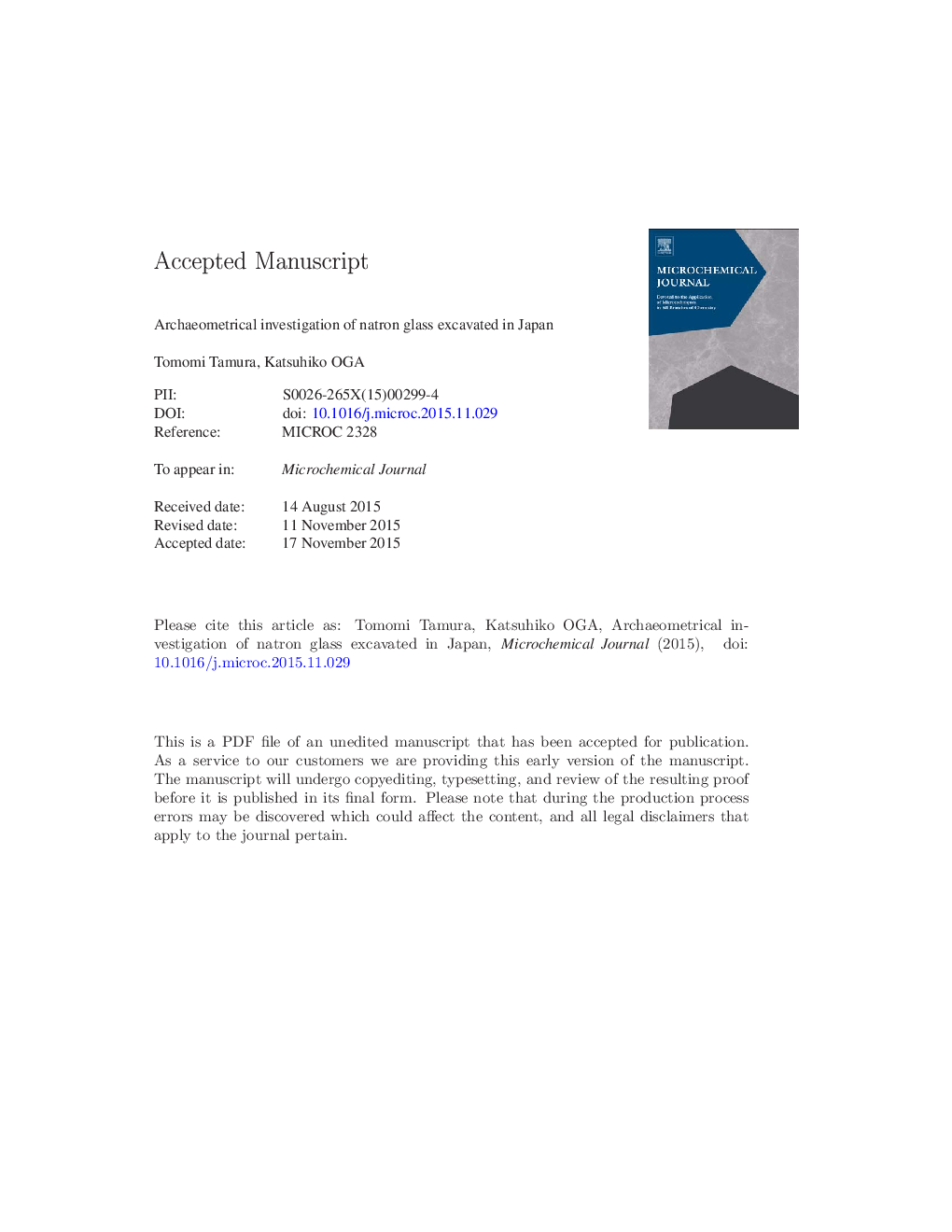| Article ID | Journal | Published Year | Pages | File Type |
|---|---|---|---|---|
| 7641422 | Microchemical Journal | 2016 | 31 Pages |
Abstract
This study examines the chemical compositions, colorants, and bead-making techniques of natron glass beads excavated in Japan. The authors classified the natron glass discussed in this study into seven main types, as well as other minor types, based on their chemical compositions. We also compared these specimens with natron glass excavated in the Mediterranean world. Type B2, which was distributed in the first half of the 5th century CE, corresponds to Levantine I type; Type A1, which was distributed mainly in the 2nd century CE, is likely to correspond to specimens containing antimony only as decolorant. However, others do not obviously match any existing groups. The results of the measurement of lead isotope ratios revealed relatively similar values between the natron glass analyzed in this study and the ore containing lead found in Iran. This showed the origin of cobalt added as colorants.
Related Topics
Physical Sciences and Engineering
Chemistry
Analytical Chemistry
Authors
Tomomi Tamura, Katsuhiko Oga,
